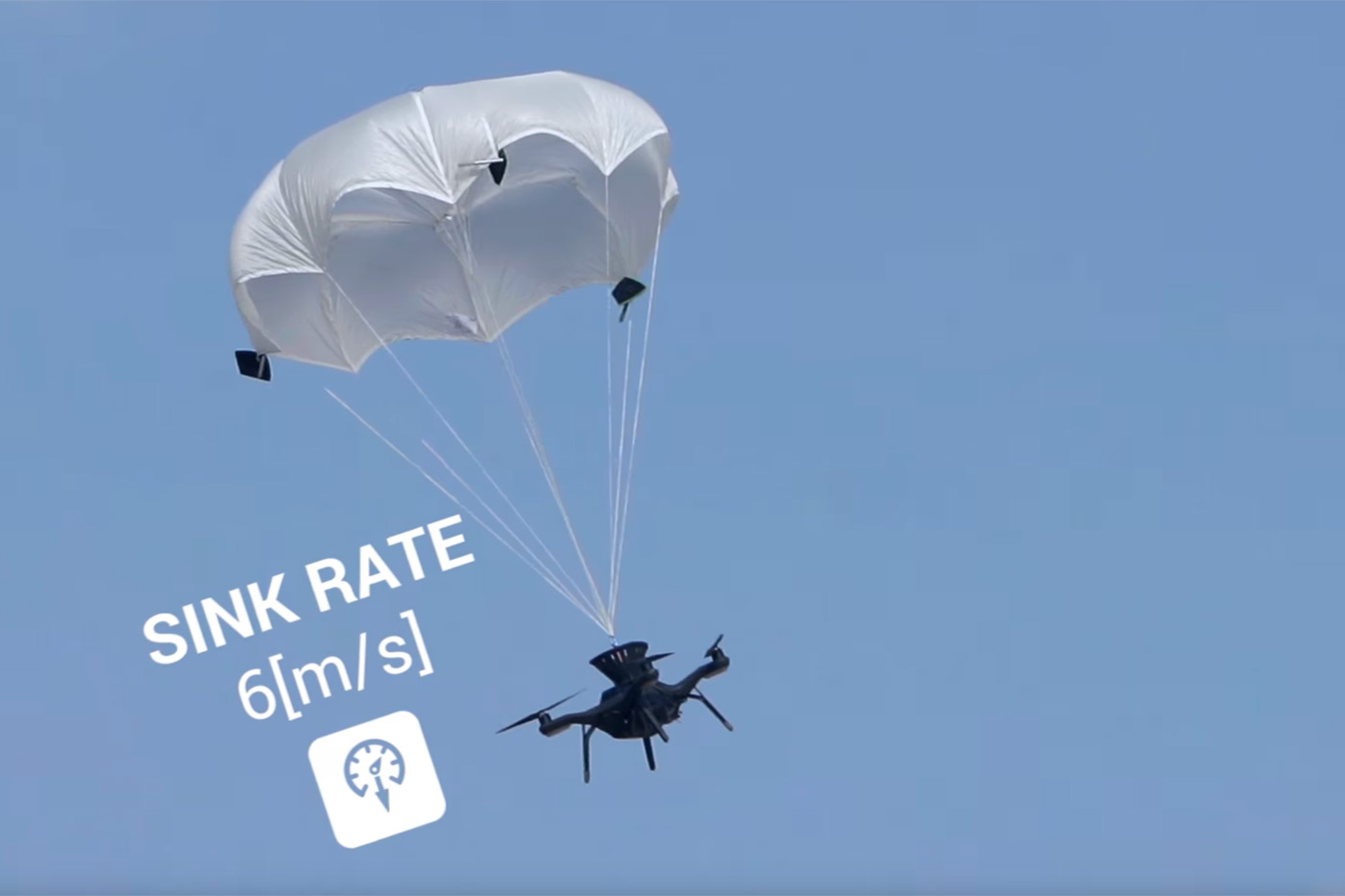Zwier Spanjer became Internet famous back in January when he uploaded a video of himself saving his brand new and expensive quadcopter from falling into a ditch after its battery died. It’s hilarious to watch, but it could have ended horribly. Michael Pick fears the same thing could happen to his quadcopter so he came up with SmartChutes, an automatic parachute deployment system for lightweight multicopters.


SmartChutes supports multicopters that weigh up to 4 lbs. and comes with a carbon fiber mount. When its gyroscope and accelerometer sense that the multicopter is in free fall or has tilted by more than 90º, SmartChutes will automatically deploy its 36″ parachute within 350ms, reducing the risk of damage from impact and hopefully giving you time to go catch your precious copter.


If you have any concern about the SmartChute throwing off the balance or stability of your quadcopter, not to worry. Its creator says that it’s so light that drones can easily compensate for the tiny bit of added weight.




Because SmartChutes has its own sensor and battery, it will work even if your multicopter’s own battery runs out or if it goes out of your remote control’s range. And you can force SmartChutes to activate by making your multicopter go into freefall.
Pledge at least $130 (USD) on Kickstarter to receive a SmartChutes unit as a reward. Note that the images and video show Michael’s working prototype; he estimates that the final version will be 30% smaller.
[via Digital Trends]
 Drone operators dread the thought of their vehicle losing power mid-flight, and not just because of the expensive crash that's likely to follow -- it's that the drone might hit something or someone on its way down. ParaZero thinks it can set those p...
Drone operators dread the thought of their vehicle losing power mid-flight, and not just because of the expensive crash that's likely to follow -- it's that the drone might hit something or someone on its way down. ParaZero thinks it can set those p...
 Drone operators dread the thought of their vehicle losing power mid-flight, and not just because of the expensive crash that's likely to follow -- it's that the drone might hit something or someone on its way down. ParaZero thinks it can set those p...
Drone operators dread the thought of their vehicle losing power mid-flight, and not just because of the expensive crash that's likely to follow -- it's that the drone might hit something or someone on its way down. ParaZero thinks it can set those p...


















